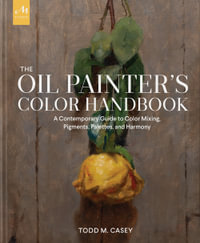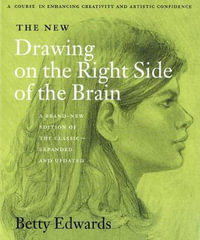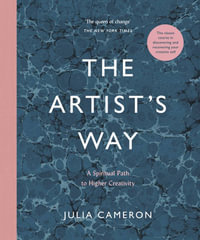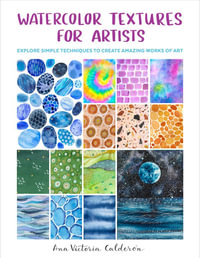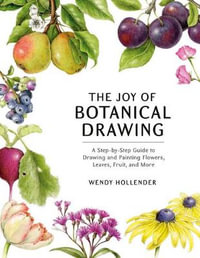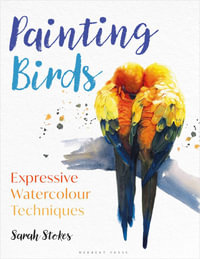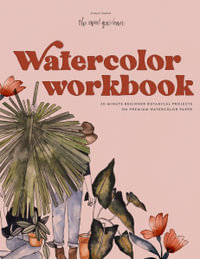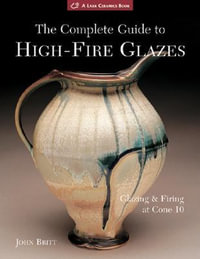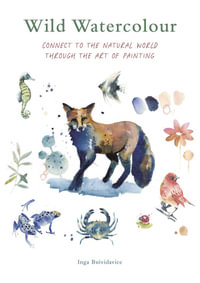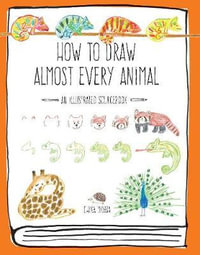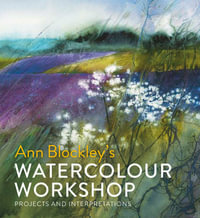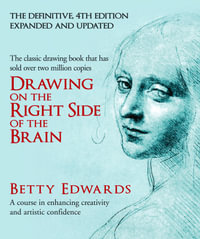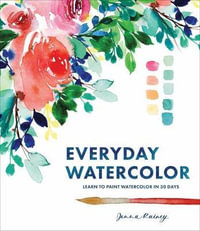Containing more than 300 step-by-step photographs, tips, instructions, and finished paintings, this complete guide provides a comprehensive introduction to watercolor and serves as an essential addition to the reference library of any artist.
For those seeking to brush up on their skills or learn new ways of applying traditional techniques, this master class on atmosphere and mood, taught by renowned instructor David Bellamy, includes many excellent demonstrations and instructions on how to paint mountains and crags, rivers, hedgerows, flowers, beaches, harbors, and figures.
With surprisingly simple techniques regarding composition, perspective, color, texture, and detail, this is a must-have resource for aspiring and experienced artists alike.
About the Author
David Bellamy was brought up and lives in Wales, so it is no wonder that he has always been fascinated by wild places. Highly regarded as a teacher of art, David has a tremendous following among leisure painters, many of whom have attended his extremely popular courses and workshops both in the UK and overseas. He gives demonstrations and talks, has produced five successful videos on watercolour painting and is a regular contributor to Leisure Painter magazine.
Industry Reviews
I've long been a fan of David Bellamy's landscapes and in this book he goes beyond this and delves into the world of still life, flowers and figure painting. Originally in hardback its now been released as a soft back version at a bargain GBP12.99. The book is a superb reference book to help with practising many of the different skills and techniques used in watercolour painting. David begins by an overview of the many different materials available, recommending a basic palette of colours to begin. He shows us lots of simple basic techniques used for watercolours. I've been using watercolours for several years and yet found tips that I didn't know within this book. It can be very disappointing trying to complete a satisfactory painting without knowing some simple skills to do such things as laying a variegated wash. David covers just that, showing us how a simple wet wash of two colours can lead to a stunning sky, and then he adds a couple of houses and we can see just how by knowing the medium and techniques we can create beautiful paintings. There are demonstrations or simple illustrations to accompany each section so we can clearly see how things work. His Still Life section carries the excellent advice to paint or draw that which excites you, and he says that much of the studies in this area he does are preparatory works for inclusion into larger compositions. He uses the exercise of drawing and painting a simple box to also practice techniques covered earlier in the book. This is useful for seeing just how and which method to use in a painting. There are some clear illustrations showing such tips as how light affects shadows and whether to use a loose or tighter approach when painting. Each has its place and can result in very different paintings. This section ends with a pottery still life that uses some of the lessons covered earlier. In the flowers and plants section particular attention is applied to the importance of observation, of the plant shapes and colours, of such things as just how the leaf is attached to the stalk, and how when using them in a still life we need to lose unimportant detail in order to result with a fresh uncluttered painting. Of course a David Bellamy book would be incomplete without a section on the landscapes with which he is so well associated and this section ends with a lovely river landscape demonstration. He continues this theme with some tuition on buildings and perspective. I found the final section very interesting - he covers painting people from close up portraits to distant figures in a landscape. He gives advice on basic anatomical shapes and the importance of correct proportion. He covers hands and feet and how not to make these look fussy and artificial, and how to check the way garments hang from the clothed figure according to their position. He gives excellent advice about capturing sketches of people in action, carrying a small sketch pad so as to be able to render quick portraits as the opportunity arises. He also advocates carrying a camera to build up a reference of useful photos to accompany your sketches. This book is so full of useful information and tips useful to everyone from the beginner to the more accomplished artist. I love the little anecdotes that David accompanies his advice with, such as the lady in Ladakh who hated the sketch he had done of her so much she demanded double payment. It's incidents like this that bring to life this book and keep the reader hooked from start to finish. One will want to dip into it again and again not just for the excellent advice but to read these little sections that pepper the text and bring the book to life.-JeannieZelos.com In this short general guide to watercolor painting, Bellamy (David Bellamy's Watercolour Landscape Course ), who leads a popular series of watercolor workshops in the UK, covers the basics of materials, technique, color, and composition. Advice and suggestions about subject matter are also provided. Bellamy includes numerous sketches, simple step-by-step projects, and diagrammed finished paintings to fully explain the process. Readers will discover the many creative possibilities of this medium, albeit within a traditional figurative framework. Beginning and intermediate watercolor painters will benefit.-Library Journal USA

